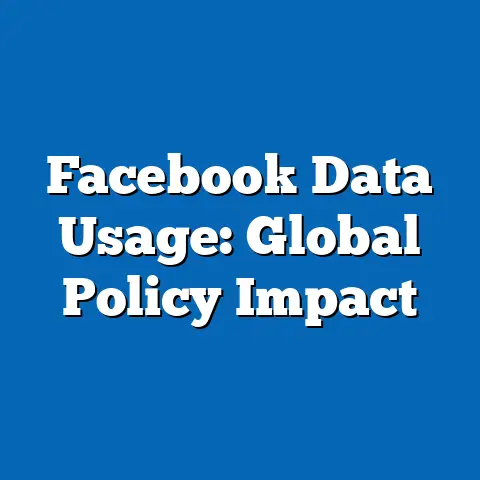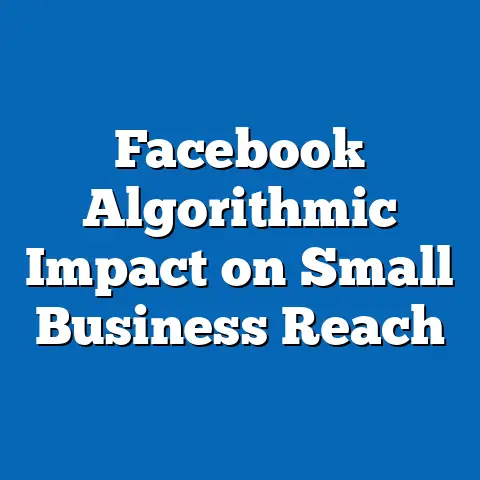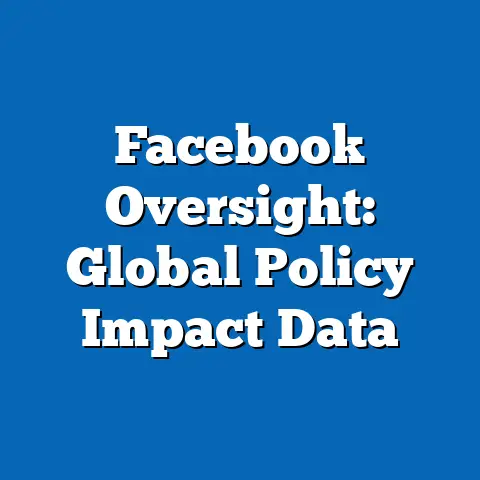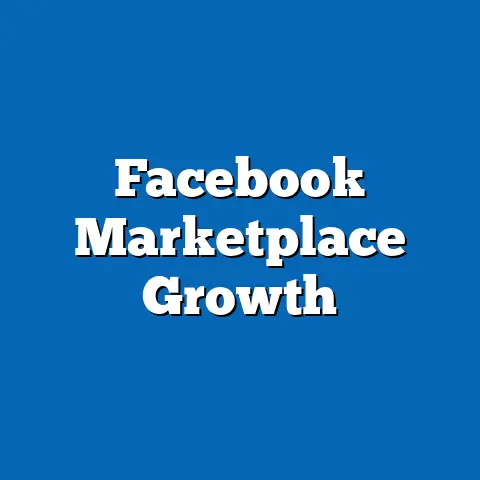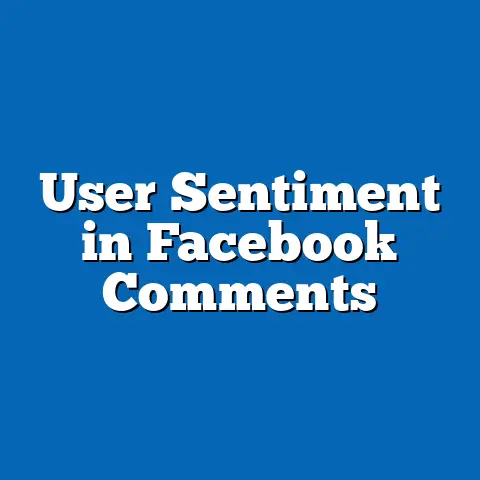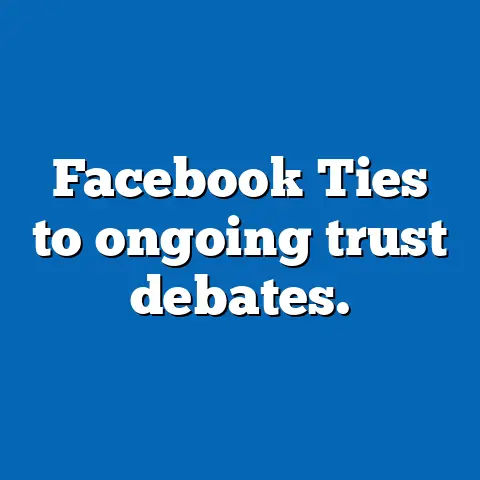Facebook’s Role in Social Media Ad Spend
What if, in 2024, Facebook were to lose its long-standing dominance in the social media advertising landscape, overtaken by newer, more dynamic platforms? Imagine a world where advertisers, once reliant on Facebook’s vast user base and sophisticated targeting tools, shift their budgets en masse to platforms like TikTok or emerging AI-driven networks, leaving Meta (Facebook’s parent company) scrambling to reinvent its revenue model. This speculative scenario raises critical questions about the evolving nature of digital advertising, the staying power of legacy platforms, and the broader implications for businesses, consumers, and the digital economy.
Facebook, launched in 2004 as a college networking site, has grown into a juggernaut of social media, with over 3 billion monthly active users as of 2023. Its advertising platform, introduced in 2007, revolutionized how brands connect with audiences through hyper-targeted ads, leveraging user data to drive unprecedented precision in marketing. Yet, as we approach 2024, shifting user demographics, privacy concerns, and competitive pressures threaten to reshape its role in social media ad spend.
Historical Context: The Rise of Facebook as an Advertising Powerhouse
To understand Facebook’s current role in social media ad spend, we must first revisit its transformative journey over the past two decades. Initially launched as a platform for personal connection, Facebook quickly recognized the commercial potential of its growing user base. By 2007, the introduction of Facebook Ads allowed businesses to target users based on demographics, interests, and behaviors—a groundbreaking innovation at the time.
Significant historical events also shaped Facebook’s trajectory. The 2016 U.S. presidential election and the subsequent Cambridge Analytica scandal in 2018 exposed the darker side of its data-driven advertising model, raising questions about privacy and misinformation. These events prompted regulatory scrutiny and user backlash, yet Facebook’s ad revenue continued to climb, reaching $117.9 billion by 2022, according to Statista.
As we approach 2024, this historical backdrop provides critical context for understanding Facebook’s strengths and vulnerabilities. Its early mover advantage and vast infrastructure have made it a cornerstone of digital advertising, but past controversies and changing market dynamics pose ongoing challenges.
Defining Characteristics of Facebook’s Advertising Platform
Facebook’s advertising platform stands out due to several defining characteristics that have historically fueled its dominance. First, its unparalleled user base offers advertisers access to a diverse, global audience spanning multiple generations—from Gen Z to Baby Boomers. As of 2023, Facebook remains the most widely used social media platform worldwide, with users spending an average of 33 minutes per day on the app, per DataReportal.
Second, Facebook’s ad targeting capabilities are among the most sophisticated in the industry. The platform leverages a wealth of user data—ranging from likes and shares to browsing history and location—to deliver personalized ads with high precision. Features like Lookalike Audiences and Custom Audiences allow advertisers to reach users similar to their existing customers or target specific segments with tailored messaging.
Third, the integration of Instagram, Messenger, and WhatsApp within Meta’s ecosystem provides advertisers with a seamless cross-platform experience. This interconnectedness enables brands to run cohesive campaigns across multiple touchpoints, maximizing reach and engagement. Additionally, Facebook’s ad formats, including Stories, Reels, and Marketplace ads, cater to diverse marketing objectives, from brand awareness to direct sales.
However, these strengths are not without limitations. Privacy changes, such as Apple’s App Tracking Transparency (ATT) framework introduced in 2021, have restricted Facebook’s ability to track users across apps, impacting ad effectiveness. As we move into 2024, these characteristics will be tested by evolving user expectations and competitive innovations.
Current Trends in Social Media Ad Spend for 2024
As we analyze Facebook’s role in 2024, several key trends in social media ad spend emerge, driven by technological, economic, and cultural shifts. First, global social media ad spend is projected to reach $219.8 billion in 2024, up from $181.2 billion in 2022, according to eMarketer. This growth reflects the increasing reliance on digital channels as traditional media continues to decline.
Within this landscape, Facebook is expected to maintain a significant share of ad spend, though its dominance is no longer guaranteed. eMarketer forecasts that Meta will account for approximately 50% of total social media ad revenue in 2024, down from 54% in 2021. This gradual decline is attributed to rising competition from platforms like TikTok, which has captured the attention of younger audiences and advertisers with its short-form video content.
Another critical trend is the shift toward privacy-first advertising. With regulations like the General Data Protection Regulation (GDPR) in Europe and the California Consumer Privacy Act (CCPA) in the U.S., coupled with Apple’s ATT changes, advertisers are reevaluating platforms that rely heavily on third-party data. Facebook has responded by investing in first-party data solutions and machine learning to maintain ad relevance, but the transition remains a challenge.
Additionally, the rise of video content is reshaping ad spend priorities. Platforms like TikTok and YouTube are capitalizing on the demand for engaging, short-form videos, while Facebook and Instagram have doubled down on Reels to compete. In 2024, video ads are expected to account for over 60% of social media ad spend, per Insider Intelligence, pushing platforms to innovate or risk losing market share.
Economic factors also play a role. With inflation and potential recessionary pressures in 2024, advertisers may prioritize cost-effective platforms with proven ROI. Facebook’s established track record and relatively lower cost-per-click (CPC) compared to newer platforms could work in its favor, though budget constraints may drive experimentation with emerging networks.
Competitive Landscape: Comparing Facebook to Other Platforms
To fully grasp Facebook’s position in 2024, it is essential to compare it with key competitors in the social media ad space. TikTok, for instance, has emerged as a formidable rival, particularly among Gen Z and younger Millennials. Its algorithm-driven content discovery and viral potential have made it a go-to platform for brands seeking cultural relevance, with ad revenue projected to reach $18.5 billion in 2024, per eMarketer.
Instagram, while part of Meta’s ecosystem, operates as a distinct entity with a strong focus on visual storytelling. Its appeal to younger demographics and influencer-driven marketing makes it a complementary yet competitive space for ad spend within Meta’s portfolio. In contrast, platforms like LinkedIn cater to B2B advertisers with higher CPCs but targeted professional audiences, carving out a niche that Facebook struggles to replicate.
YouTube, owned by Google, remains a leader in video advertising, with its long-form and short-form content (via YouTube Shorts) attracting diverse demographics. Its integration with Google’s broader ad ecosystem offers advertisers robust cross-channel opportunities, challenging Facebook’s video ad ambitions.
Emerging platforms, such as Snapchat and Pinterest, also warrant attention. Snapchat’s focus on ephemeral content and augmented reality (AR) ads appeals to younger users, while Pinterest’s strength lies in e-commerce and intent-driven advertising. These platforms may not rival Facebook’s scale, but they siphon off niche ad budgets that could otherwise flow to Meta.
Importantly, competition is not solely about user numbers or ad formats—it’s also about trust and perception. Facebook’s history of privacy scandals continues to impact brand sentiment, whereas newer platforms are often seen as more innovative and user-friendly. In 2024, this dynamic could influence where advertisers allocate their budgets, even if Facebook’s raw metrics remain strong.
Societal Implications: The Broader Impact of Facebook’s Ad Dominance
Facebook’s role in social media ad spend extends beyond economics—it has profound societal implications that shape culture, politics, and individual behavior. One significant concern is the platform’s influence on information dissemination. With billions of users consuming content daily, Facebook ads have the power to sway public opinion, as seen during the 2016 election cycle and subsequent global events.
The platform’s algorithmic targeting can create echo chambers, where users are exposed primarily to content and ads that reinforce their existing beliefs. This polarization has been linked to societal divisions, prompting calls for greater transparency in ad practices. In 2024, as political campaigns ramp up for elections worldwide, Facebook’s role in political advertising will likely face renewed scrutiny.
Another societal impact is the effect on consumer behavior and mental health. Facebook ads often promote idealized lifestyles or products, contributing to comparison culture, particularly among younger users. Studies, such as those from the Pew Research Center, have highlighted links between social media use and anxiety or dissatisfaction, raising ethical questions about the role of targeted advertising in exacerbating these issues.
From a cultural perspective, Facebook’s ad platform has democratized marketing, allowing small businesses and creators to reach global audiences at relatively low costs. However, this accessibility comes with trade-offs, as the platform’s algorithms often prioritize paid content over organic reach, marginalizing voices that cannot afford to compete. In 2024, this dynamic could further shape cultural narratives, amplifying those with financial backing while silencing others.
Privacy remains a central societal concern. As users become more aware of data collection practices, trust in platforms like Facebook may erode. A 2023 survey by the Pew Research Center found that 64% of Americans are concerned about how social media companies use their data, a sentiment that could influence user engagement and, by extension, ad effectiveness in 2024.
Economic Implications: Facebook’s Role in the Digital Economy
Economically, Facebook’s position in social media ad spend has far-reaching consequences for businesses, industries, and global markets. For small and medium-sized enterprises (SMEs), Facebook remains a critical tool for growth, offering affordable advertising options compared to traditional media. A 2023 report by Meta indicated that 200 million businesses use its platforms for advertising, many of which rely on the platform as their primary marketing channel.
However, as ad costs rise due to competition and privacy-related limitations, SMEs may face challenges in maintaining visibility. In 2024, this could widen the gap between large corporations with substantial ad budgets and smaller players, potentially stifling innovation and entrepreneurship.
For larger brands, Facebook’s ecosystem offers a reliable return on investment (ROI), with tools to track conversions and optimize campaigns in real time. Yet, the platform’s declining dominance among younger demographics could force brands to diversify their ad spend, impacting Meta’s revenue growth. If advertisers shift budgets to TikTok or other platforms, Meta may need to lower ad prices or introduce new features to retain market share, influencing the broader digital ad economy.
From a macroeconomic perspective, social media ad spend, led by platforms like Facebook, contributes significantly to the digital economy. In the U.S. alone, digital advertising supports millions of jobs in marketing, technology, and creative industries. A decline in Facebook’s ad revenue could ripple through these sectors, while a sustained dominance could reinforce its role as an economic engine.
Workplace Implications: Adapting to a Shifting Ad Landscape
The evolving role of Facebook in social media ad spend also has implications for the workplace, particularly for marketing and advertising professionals. As platforms diversify and new technologies emerge, employees must adapt to changing skill requirements. Familiarity with Facebook Ads Manager remains a valuable asset, but proficiency in TikTok Ads, Google Analytics, or emerging AI tools is increasingly critical.
Companies may need to restructure their marketing teams to balance expertise across multiple platforms, rather than relying heavily on Facebook-centric strategies. In 2024, this could lead to a demand for hybrid roles that combine creative, analytical, and technical skills, reflecting the complexity of modern digital advertising.
Additionally, workplace culture may shift as younger employees, who are more attuned to platforms like TikTok, bring fresh perspectives to advertising strategies. This generational dynamic could create tension or innovation, depending on how organizations manage the transition. Training and upskilling programs will be essential to bridge knowledge gaps and ensure teams remain competitive in a fragmented ad landscape.
Technological Factors: Innovations and Challenges for Facebook in 2024
Technology is both a driver and a disruptor of Facebook’s role in social media ad spend. On one hand, Meta’s investments in artificial intelligence (AI) and machine learning enhance ad targeting and optimization, even in a privacy-constrained environment. Features like Advantage+ automated campaigns, introduced in 2022, use AI to streamline ad creation and placement, appealing to advertisers seeking efficiency.
On the other hand, technological shifts pose challenges. The rise of decentralized social networks and Web3 platforms could fragment the social media landscape, drawing users and advertisers away from centralized giants like Facebook. Additionally, advancements in ad-blocking tools and privacy-focused browsers may further limit data collection, forcing Meta to rethink its core business model.
The metaverse, a key focus for Meta since its 2021 rebranding, represents both opportunity and uncertainty. If successful, virtual reality (VR) and augmented reality (AR) environments could open new avenues for immersive advertising. However, as of 2023, adoption remains limited, and significant ad revenue from the metaverse is unlikely by 2024, per analyst projections.
Diversity Within the Advertising Ecosystem: Nuances and Variations
While Facebook often dominates discussions of social media ad spend, it is critical to acknowledge the diversity within the advertising ecosystem. Not all advertisers prioritize the platform equally—industry, target audience, and geographic location play significant roles in ad spend decisions. For instance, e-commerce brands may favor Facebook and Instagram for their direct-to-consumer capabilities, while B2B companies might allocate more budget to LinkedIn or Google Ads.
Geographic variations also matter. In regions like Asia-Pacific, where platforms like WeChat and Line dominate, Facebook’s influence is less pronounced. Conversely, in North America and Europe, it remains a primary channel, though TikTok is gaining ground. In 2024, these regional differences will shape how Meta competes for global ad dollars.
Demographic nuances further complicate the picture. While Facebook boasts a broad user base, its appeal to Gen Z is waning, with only 32% of U.S. teens using the platform regularly, per a 2023 Pew Research Center study. Advertisers targeting younger audiences may shift budgets elsewhere, while those focused on older demographics may double down on Facebook’s reliable reach.
Forward-Looking Insights: What Lies Ahead for Facebook in 2024 and Beyond?
As we look to 2024, several uncertainties surround Facebook’s role in social media ad spend, but informed speculation offers valuable insights. First, Meta’s ability to adapt to privacy regulations and technological disruptions will be critical. Investments in first-party data, AI, and alternative revenue streams (like the metaverse) could bolster its position, though success is not guaranteed.
Second, competition will intensify as TikTok and other platforms innovate rapidly. Facebook’s scale and infrastructure provide a buffer, but complacency could erode its market share. Strategic acquisitions or partnerships may be necessary to stay ahead, though regulatory hurdles could limit such moves.
Third, societal pressures around misinformation, privacy, and mental health will continue to shape public and regulatory attitudes toward Facebook. How Meta addresses these concerns—through transparency, policy changes, or user empowerment—will influence advertiser confidence and user engagement in 2024.
Economically, global conditions will play a role. A recession could drive advertisers toward cost-effective platforms like Facebook, while economic growth might encourage experimentation with newer networks. Either scenario presents opportunities and risks for Meta.
Ultimately, while Facebook is unlikely to lose its relevance overnight, 2024 may mark a pivotal moment in its trajectory. The platform’s ability to balance innovation with trust-building will determine whether it remains the cornerstone of social media ad spend or cedes ground to agile competitors.
Conclusion
Facebook’s role in social media ad spend for 2024 is a complex interplay of historical dominance, current trends, and future uncertainties. From its pioneering ad platform to its vast user base, the platform has shaped the digital advertising landscape for nearly two decades. Yet, as privacy concerns, competition, and technological shifts redefine the industry, its position is no longer unassailable.
This analysis has explored the societal, economic, and workplace implications of Facebook’s evolving role, highlighting both its enduring strengths and emerging vulnerabilities. While data suggests Meta will retain a significant share of ad spend in 2024, the gradual decline in dominance signals a broader transformation in how brands connect with audiences.
Looking ahead, the future of Facebook in social media advertising hinges on adaptability and trust. As we navigate an era of rapid change, one thing remains clear: the platform’s story is far from over, and its next chapter will have profound implications for the digital economy and society at large.

